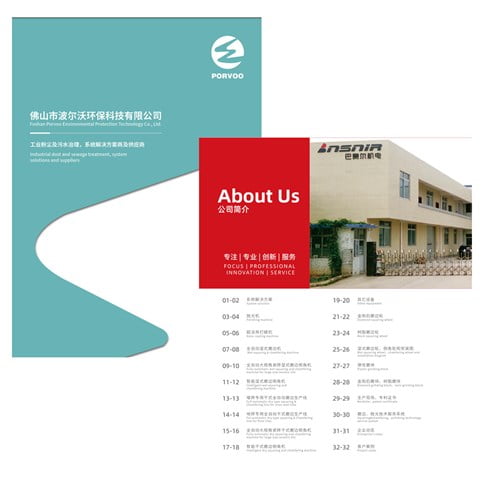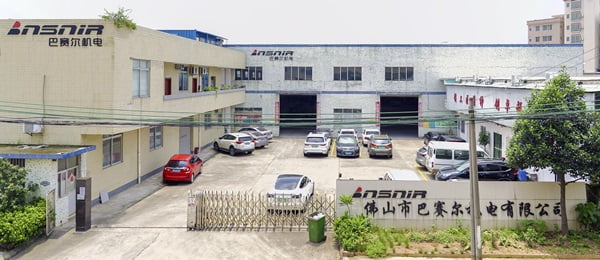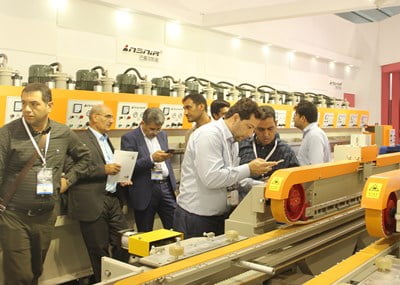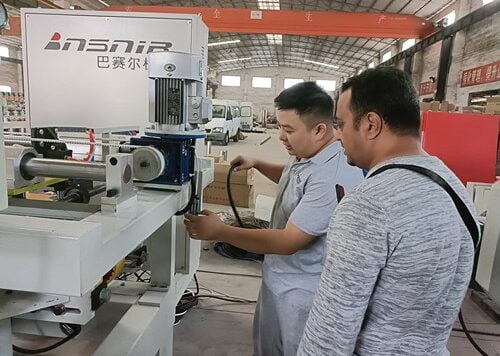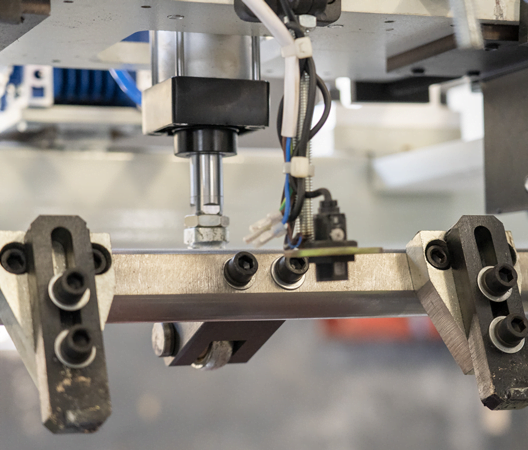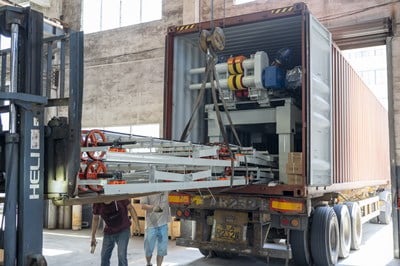The global porcelain tile market has experienced unprecedented growth, with manufacturers facing increasing pressure to deliver flawless surface finishes while maintaining production efficiency. Porcelain polishing operations represent a critical bottleneck in tile manufacturing, where substandard equipment can result in surface defects, reduced throughput, and significant material waste. Industry reports indicate that up to 15% of tiles are rejected due to inadequate polishing, translating to millions in lost revenue annually.
Without proper line polishing equipment, manufacturers struggle with inconsistent surface quality, frequent production delays, and escalating operational costs. The consequences extend beyond immediate production issues—poor surface finishes can damage brand reputation and result in costly customer returns. These challenges compound when dealing with large-format porcelain tiles, where even minor imperfections become highly visible.
This comprehensive analysis examines the most effective line polishing machines for porcelain tile production, providing detailed insights into equipment selection criteria, performance optimization strategies, and industry best practices. We’ll explore how leading manufacturers like BASAIR Tech are revolutionizing porcelain polishing through advanced automation and precision engineering.
What Makes a Line Polishing Machine Essential for Porcelain Tile Production?
Surface Quality Requirements in Modern Markets
Today’s porcelain tiles demand mirror-like finishes with surface roughness values below 0.1 μm Ra. Line polishing machines achieve this precision through controlled abrasive action, systematically removing surface irregularities while maintaining dimensional accuracy. The equipment must handle production speeds of 8-12 meters per minute while preserving consistent surface characteristics across the entire tile surface.
In our experience working with tile manufacturers, surface quality inconsistencies often stem from inadequate polishing head pressure control. Modern systems incorporate servo-controlled pressure adjustment, allowing operators to fine-tune polishing parameters based on porcelain composition and desired finish specifications.
Production Efficiency and Throughput Optimization
Line polishing systems directly impact manufacturing throughput, with advanced machines processing up to 2,000 square meters per hour. This efficiency gain becomes critical when considering that polishing represents approximately 25% of total production cycle time. Manufacturers report 30-40% productivity improvements when upgrading from manual to automated line polishing systems.
| Machine Type | Processing Speed | Hourly Output | Efficiency Gain |
|---|---|---|---|
| Manual Systems | 3-5 m/min | 800 m²/h | Baseline |
| Semi-Automatic | 6-8 m/min | 1,200 m²/h | 50% |
| Fully Automatic | 10-12 m/min | 2,000 m²/h | 150% |
How Do Line Polishing Machines Transform Porcelain Tile Surfaces?
Multi-Stage Abrasive Processing
The transformation process involves sequential abrasive stages, typically progressing from 120-grit to 3000-grit diamond tools. Each stage removes approximately 0.02-0.05mm of material, gradually refining surface texture while eliminating manufacturing marks. This systematic approach ensures uniform material removal across varying porcelain densities and compositions.
A recent case study from a major Italian tile manufacturer demonstrated how implementing a seven-stage polishing sequence reduced surface defects by 85% compared to their previous four-stage process. The additional stages, while increasing processing time by 12%, virtually eliminated costly rework and customer complaints.
Water Management and Coolant Systems
Effective water management prevents thermal damage during polishing operations. Modern systems maintain water flow rates of 15-25 liters per minute per polishing head, ensuring consistent cooling and debris removal. Temperature monitoring systems prevent overheating that could cause thermal stress fractures in porcelain substrates.
Surface Gloss Development
Porcelain tiles achieve their characteristic luster through controlled surface compression during final polishing stages. Diamond polishing pads create microscopic surface deformation that enhances light reflection properties. Gloss measurements typically range from 85-95 GU (Gloss Units) for premium tiles, with line polishing machines maintaining ±2 GU consistency across production runs.
What Are the Key Features to Look for in Porcelain Polishing Equipment?
Precision Control Systems
Modern line polishing equipment incorporates PLC-based control systems with touchscreen interfaces, enabling precise adjustment of processing parameters. These systems monitor polishing head pressure, rotation speed, and feed rates in real-time, automatically compensating for variations in tile thickness or surface hardness.
Feedback control loops maintain polishing consistency by continuously adjusting parameters based on surface quality sensors. This automation reduces operator skill requirements while ensuring consistent results across different production shifts.
Modular Design and Flexibility
Equipment modularity allows manufacturers to configure polishing lines based on specific product requirements. Interchangeable polishing heads accommodate different tile sizes, from standard 300x300mm formats to large-format 1200x2400mm slabs. This flexibility proves essential when manufacturers produce diverse product lines requiring different surface treatments.
Maintenance and Serviceability
Accessible component design minimizes maintenance downtime, which is critical given that polishing equipment operates continuously in most production environments. Quick-change systems for diamond tooling reduce changeover time from 45 minutes to under 10 minutes, significantly improving overall equipment effectiveness.
Which Line Polishing Machine Technologies Deliver Superior Results?
Diamond Tool Technology
Diamond abrasives represent the gold standard for porcelain polishing, offering superior cutting performance and extended tool life. Synthetic diamond segments maintain consistent grit size distribution, ensuring uniform surface treatment throughout the tool’s operational life. Tool costs typically range from $150-300 per polishing head, with replacement intervals of 80,000-120,000 square meters.
Industry research indicates that diamond tool quality directly correlates with final surface quality. Premium-grade diamond tools produce 40% fewer surface defects compared to standard-grade alternatives, justifying their higher initial cost through reduced rework and quality claims.
Servo-Driven Motion Systems
Servo motor drives provide precise control over polishing head movement, maintaining consistent pressure and positioning across the tile surface. These systems compensate for tile thickness variations automatically, ensuring uniform material removal. While servo systems add 20-30% to equipment costs, they deliver measurable improvements in surface quality consistency.
Water Recycling and Filtration
Advanced filtration systems enable water recycling, reducing operational costs and environmental impact. Magnetic separators remove ferrous particles, while hydrocyclones eliminate ceramic debris. Properly designed systems achieve 90% water recovery rates, significantly reducing fresh water consumption and wastewater disposal costs.
How to Choose the Right Line Polishing Machine for Your Production Needs?
Production Volume Assessment
Equipment selection begins with accurate production volume forecasting. Manufacturers producing less than 50,000 square meters annually may find semi-automatic systems cost-effective, while high-volume producers require fully automated lines to achieve competitive unit costs.
Consider future expansion plans when sizing equipment. Investing in higher-capacity systems provides growth accommodation while potentially reducing per-unit processing costs through improved efficiency.
Tile Format and Specifications
Different tile formats require specific handling capabilities. Large-format tiles demand enhanced support systems to prevent deflection during polishing, while small-format tiles benefit from multi-tile processing capabilities. Surface finish requirements also influence equipment selection—high-gloss finishes require additional polishing stages compared to satin finishes.
Integration with Existing Production Lines
Successful implementation requires careful consideration of existing production line integration. Conveyor systems, tile handling equipment, and quality control stations must interface seamlessly with new polishing equipment. This integration often represents 25-35% of total project costs but proves essential for smooth operations.
| Consideration Factor | Weight | Key Metrics |
|---|---|---|
| Production Volume | 40% | m²/hour capacity |
| Quality Requirements | 30% | Surface finish specifications |
| Integration Complexity | 20% | Existing line compatibility |
| Total Cost of Ownership | 10% | Life-cycle costs |
What Are the Performance Advantages of Modern Line Polishing Systems?
Automation and Consistency Benefits
Automated systems eliminate human variability in polishing operations, delivering consistent results regardless of operator skill levels. Statistical process control data shows automated systems achieve ±0.5 GU gloss consistency compared to ±3 GU for manual operations. This consistency translates directly to reduced quality complaints and improved customer satisfaction.
Energy Efficiency Improvements
Modern variable frequency drives reduce energy consumption by 25-40% compared to fixed-speed systems. Smart power management systems optimize motor operation based on actual processing loads, further reducing electrical costs. Given that polishing operations typically consume 15-20% of total plant energy, these savings prove substantial.
Reduced Labor Requirements
Automated systems require fewer operators, with typical staffing ratios of 1:3 (operator to machine ratio) compared to 1:1 for manual systems. While initial automation investment is significant, labor savings typically justify costs within 18-24 months for medium to high-volume operations.
However, skilled maintenance personnel become more critical with automated systems, requiring specialized training on servo systems, PLC programming, and precision measurement equipment.
How Do Leading Manufacturers Optimize Their Line Polishing Equipment?
Continuous Improvement Methodologies
Leading manufacturers implement systematic optimization programs, analyzing production data to identify improvement opportunities. Real-time monitoring systems track key performance indicators including surface quality metrics, tool wear rates, and energy consumption. This data-driven approach enables predictive maintenance and process optimization.
Advanced Quality Control Integration
Modern polishing lines incorporate inline quality control systems using laser profilometry and optical surface analysis. These systems detect surface defects immediately, enabling rapid parameter adjustment before significant quantities of defective tiles are produced. Such systems reduce quality control costs by 60% while improving defect detection accuracy.
Predictive Maintenance Implementation
Vibration monitoring, thermal imaging, and oil analysis programs maximize equipment availability while minimizing maintenance costs. Predictive maintenance typically reduces unplanned downtime by 70-80% compared to reactive maintenance approaches. This reliability proves crucial in continuous production environments where downtime directly impacts delivery commitments.
Selecting the optimal line polishing machine for porcelain tiles requires balancing production requirements, quality specifications, and economic considerations. Modern automated systems deliver superior consistency and efficiency, while advanced diamond tooling and servo control systems ensure premium surface quality. The key lies in matching equipment capabilities to specific production needs while planning for future growth and technological advancement.
Investment in high-quality porcelain polishing equipment pays dividends through improved product quality, reduced operational costs, and enhanced market competitiveness. As the industry continues evolving toward larger formats and more demanding surface specifications, the role of precision line polishing equipment becomes increasingly critical for manufacturing success.
Consider partnering with established equipment manufacturers who provide comprehensive technical support, training programs, and ongoing service capabilities. The right equipment selection today positions manufacturers for sustained success in tomorrow’s competitive porcelain tile market.
Frequently Asked Questions
Q: What is the best line polishing machine for porcelain tiles?
A: The best line polishing machine for porcelain tiles is one that combines precision, durability, and advanced control features to deliver high-quality polishing results. Machines like those with multiple polishing heads (e.g., 12-20 heads) offer excellent surface treatment by evenly polishing porcelain tiles, glazed tiles, granite, and marble slabs. They often include intelligent PLC systems, shape memory functions, and abrasive consumption monitoring for efficient, automated operation. Choosing a machine customizable to your tile size and production capacity ensures optimal results for porcelain tile polishing lines.
Q: What types of polishing machines are available for porcelain tiles?
A: There are several types of polishing machines for porcelain tiles, including:
- Rotary polishing machines: Use a spinning head to evenly polish large surface areas like floors and walls.
- Oscillating polishing machines: Move the polishing head side-to-side for delicate, controlled polishing, ideal for edges and corners.
- Handheld polishing machines: Compact and precise, perfect for small or hard-to-reach areas.
Each type offers different advantages depending on the size and detail of the porcelain tile project.
Q: How do wet and dry polishing machines differ for porcelain tiles?
A: Wet polishing machines use water as a coolant and lubricant during polishing, reducing dust and often producing a shinier finish. Dry polishing machines operate without water, making them more portable and convenient for locations without water access. While wet machines are preferred for high-gloss finishes and dust control, dry machines are easier to handle for smaller jobs or quick touch-ups.
Q: What features should I consider when choosing a line polishing machine for porcelain tiles?
A: Key features to look for include:
- Number of polishing heads: More heads generally mean faster and more uniform polishing.
- Automation and control systems: PLC screens and smart functions improve precision and reduce labor.
- Adjustable speed and water cooling: For better control over the polish and tile surface protection.
- Machine adaptability: Ability to handle different tile sizes and thicknesses enhances versatility.
- Build quality and maintenance access: Robust construction with easy maintenance ensures long-term reliability.
Q: Why is a line polishing machine important for porcelain tile production?
A: A line polishing machine significantly improves the quality and consistency of porcelain tile finishes. It automates the polishing process, ensuring uniform surface treatment and enhancing tile aesthetics. Additionally, advanced machines reduce manual labor and material waste, boosting production efficiency. This results in polished porcelain tiles with a professional, high-gloss or matte finish that meets market standards.
Q: Can line polishing machines be customized for different porcelain tile needs?
A: Yes, many line polishing machines can be tailored to the specific requirements of your porcelain tile production. Customization options include the number of polishing heads, processing width and length, and specialized features like abrasive consumption tracking or shape memory functions. This flexibility allows manufacturers to optimize their polishing lines for various tile sizes, shapes, and desired finishes, ensuring high-quality results and operational efficiency.
External Resources
- POLISHING LINES FOR CERAMIC TILES – SIMEC SpA – Overview of advanced polishing lines suitable for ceramic and porcelain tiles, with technical details on various machine models and features.
- 16 Heads Polishing Machine Line – Basair – Provides information about a specialized polishing machine line designed for tile surfaces, including porcelain tiles, with features such as automation, PLC systems, and customizable configurations.
- Porcelain Tile Polishing Machines – Precision & Power – Alibaba – A comprehensive marketplace listing various porcelain tile polishing machines, detailing types, functionalities, and user considerations for selecting the right equipment.
- Breton Kappa K | Lapping Polishing Machine For Ceramic Slabs – Describes a robust lapping and polishing machine specifically engineered for porcelain stoneware tiles, highlighting power efficiency, maintenance, and operational ease.
- Best electric mop for high gloss polished porcelain tiles please?? – Mumsnet – A user discussion and recommendations regarding effective cleaning and polishing tools for high-gloss porcelain tiles, featuring firsthand experiences with electric mops.
- Squaring Machine Lines: A Cost-Effective Solution for Improved Tile Production – Basair – Explains the roles of squaring and line polishing machines in ceramic (including porcelain) tile production, providing insights into quality enhancement and production efficiency.

